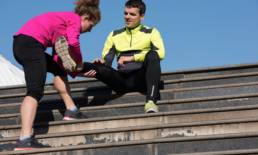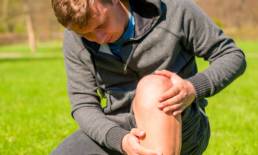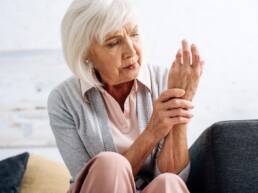PRI Neuropathy Pain
Neuropathy Pain
Neuropathy Pain and Natural Biologics
We’re fortunate to live at a time when Biologics can offer highly effective therapy for neuropathy pain. Here’s a discussion of what neuropathy is and how today’s doctors are dealing with it.
Neuropathy Pain: the Basics
Just a few years ago, we hardly ever heard of neuropathy and the pain associated with it unless it was specifically mentioned in a discussion about diabetes and the effects it has on the body. Today, however, it seems we are hearing about this painful condition more and more often on the news, TV, and radio.
Traditional Treatments
- Change the color to match your brand or vision,
- add your logo, choose the perfect layout,
- modify menu settings and more.

Regenerative Medicine Treatments
- Change the color to match
- your brand or vision,
- add your logo, c
- hoose the perfect layout, modify menu settings and more.
Neuropathy Pain and Biologics
Amnio-Derived Biologics medicine is an outgrowth of translational research in tissue engineering and molecular biology. It offers the promise of restoring damaged tissue by promoting new growth. As noted above, neuropathy is generally the result of some form of damage. Provided the damage can be identified, and with a thorough medical history and modern diagnostic methods, it probably can, Biologics can repair some of the damage allowing for pain free functional living. In the case of neuropathy pain, this means the pain goes away because the source has been repaired.
One of the most promising avenues of regenerative medicine, and one we have extensive experience with here at the Pain Relief Institute, is Amnio-Derived Biologics. Amnio-Derived Biologics has proved useful for addressing a variety of complaints including joint, tendon, ligament, and muscle damage, which means it can often prove therapeutic for neuropathy pain.
Neuropathy Pain Gets Worse When Left Untreated
Whatever the underlying cause, as is the case with most other health conditions, neuropathy will not resolve itself and will only get worse if you let it go and do not seek treatment as soon as possible. The neuropathy pain will worsen, the weakness will not improve, and the numbness can get to the point where you could develop an infection. All of these problems increase your risk of serious injury or even the loss of a limb from advanced untreated neuropathy. At the Pain Relief Institute we want to help you avoid this.
Happily, that should be possible. Recent advances in medical science make it possible to address neuropathy pain with Amnio-Derived Biologics, healing cells derived from living cells.
Cause
GENETIC FACTORS
REPETITIVE USE
ADVANCING AGE
CERTAIN MEDICAL CONDITIONS
Symptoms of Neuropathy Pain
Pain is the biggest issue that people with neuropathy complain about. Small fibers and nerves in your hands and feet can become damaged with prolonged untreated neuropathy, and this can lead to:
- burning pain radiating in hands or feet
- pins and needles in the extremities
- numbness, weakness, and tingling
- deadened nerves in fingers and toes
- a knotted feeling in the soles and palms
- pain from the lightest touches
- cramping of the feet
- fingers twisting and locking
- restless legs and feet
- pain from the pressure of walking
- balance problems
- inability to grasp with the hands
- pain when twisting the wrists
- hands and feet feeling tired or heavy
Small fiber neuropathy pain tends to be worse at night so this will make it more difficult to get a full night’s sleep which in and of itself causes other health problems and makes pain levels rise even more.
Diabetics are the most at-risk group for the development of neuropathy symptoms and pain. It has been estimated that between 20-30% of all diabetics experience diabetic neuropathy pain. Diabetic neuropathy is believed to be caused by the slower regeneration of nerve endings and connections throughout the body, but especially in the fine fibers of the hands and feet.
Other risk factors that increase the risk of neuropathy pain include certain medications, smoking, drinking, autoimmune disease, nerve damage or diseases, chemotherapy treatments, and other chronic health conditions.
PRI Sciatica
Sciatica
THE SCIATIC NERVE BEGINS AT THE LOWER BACK AND EXTENDS DOWN THROUGH THE BACK OF EACH LEG.
When this nerve is abnormally compressed or irritated, it causes sciatica, which is characterized by shooting pain in the area of the nerve.

Treatment
Treatment for sciatica depends often on the severity of your signs and symptoms.
There are several traditional options that may be a good starting point if the pain is severe and needs to be controlled quickly. Thereafter or if the pain is chronic, mild to moderate there are safer biologic based regenerative medicine options.
Traditional options include: Medications, Steroid Injections and Surgery.
More conservative options would be Biologics such as PRP and Amnio-derived cell therapy often combine with Physical Therapy, Non-Invasive Laser Therapy and assistive bracing.
The recommendation at PRI is to always start conservative and work your way to surgery being the last option.
Sciatica can typically be diagnosed with a thorough discussion of your symptoms and a physical exam. When you first arrive at our Los Angeles or New York offices, we will review the symptoms you’re experiencing to determine if they are in alignment with this condition.
From there, we will have you lie on your back with your legs straight. We will then raise your legs slowly and take note of when the pain appears, as this will provide us with information regarding which nerves are affected and whether or not your discs are involved. Once we’ve determined that your pain is caused by sciatica, we will determine the underlying condition with a series of imaging tests, such as an x-ray and MRI.
Cause
Sciatica is a symptom of another condition. In most cases, the pain is associated with:
DISC HERNIATION
Your spine is comprised of a number of bones, also called vertebrae. Each of these bones is cushioned by a spongy disc, which enables spinal flexibility and absorbs shock. When one of these structures bulges or breaks open, it’s called a herniated disc. A herniated disc can occur anywhere along your spine and neck. However, it’s most common in the lower back, or the lumbar spine. We have had great success in treating disc herniation related pain with innovative regenerative treatments like PRP nd BIOLOGICS injections.
SPINAL STENOSIS
Spinal stenosis is characterized by the narrowing of the spaces within your spine, placing pressure on your spinal cord and nearby nerves. When this occurs, it causes pain, numbness, tingling and weakness. It can develop as the result of a spinal injury or due to thickened ligaments and disc herniation.Often spinal stenosis is caused by osteoarthritis of the spine.
SPONDYLOLISTHESIS
Spondylolisthesis is a spinal condition that affects the lower vertebrae (spinal bones). This disease causes one of the lower vertebrae to slip forward onto the bone directly beneath it. It’s a painful condition but treatable in most cases. Causes of spondylolisthesis vary based on age, heredity, and lifestyle.
Pain that radiates from your lower (lumbar) spine to your glut and down the back of your leg is the classic presentation of sciatica. You might feel the discomfort almost anywhere along the nerve pathway, but it’s especially likely to follow a path from your low back to your glut and the back of your thigh and calf.
The pain can vary widely, from a mild ache to a sharp, burning sensation or excruciating pain. Sometimes it can feel like a jolt or electric shock. It can be worse when you cough or sneeze, and prolonged sitting can aggravate symptoms. Usually only one side of your body is affected.
Some people also have numbness, tingling or muscle weakness in the affected leg or foot. You might have pain in one part of your leg and numbness in another part.
- Pain into leg/s, often sharp
- Numbness and Tingling into leg/s
- Muscle weakness
- Glut pain when sitting
- Loss of bowel or bladder function
PRI Disc Herniation
Traditional Treatments
Epidural Injection
Facet Injection
Medication
Radiofrequency Ablation
Surgery
Spinal Cord Stimulator

Regenerative Medicine Treatments
Bone Marrow Concentrate (BMC/Stem Cell Therapy)
PRP
Amnio-Derived Cellular Therapy
MLS Laser Therapy
PREMIER TREATMENT FOR YOUR HERNIATED DISC
As an alternative to traditional steroid treatments, our team is actively researching new non-pharmaceutical approaches that include cell based therapies.
Pain Relief Institute is the premier destination in Chicago and the Midwest for innovative treatment of Herniated Disc. PRI treats athletes, weekend warriors and active seniors who are not interested in simply masking their discomfort with medications or temporary relief from cortisone injections and are looking to avoid surgery.
We specialize in non-surgical and minimally invasive treatment approaches. With years of experience researching and performing cutting-edge techniques, few physicians have more to offer than the Specialists at Pain Relief Institute.
Disclaimer: Our healthcare practitioners use products and perform therapies cleared for general use by the United States Food and Drug Administration, but specific indications for treatment have not be evaluated and reviewed by the FDA.
Diagnosis
To determine if your symptoms are caused by a herniated disc, our physician will begin with a full physical examination. We’ll talk to you about the symptoms you are experiencing, and we’ll evaluate your back for pain and tender areas. From there, we will have you lie down on your back and move your legs to different positions, which can provide insight into exactly what’s causing your pain.
Frequently we may order an X-ray or MRI to confirm the location of the herniated disc and obtain a baseline image before treatments, as well as to identify which nerves are involved and monitor progress and healing after treatments.
What Causes Disc Herniation
Many people have no symptoms from a herniated disc. When diagnosed early surgery is usually not necessary to relieve the problem. A herniated disc can occur in any part of your spine, from your neck to your lower back. The lower back is one of the more common areas for a herniated discs. Your spinal column is an intricate network of nerves and blood vessels. A herniated disc can place extra pressure on the nerves and muscles around it.
Disc herniation is most often the result of a gradual, aging-related wear and tear called disc degeneration. As you age, your discs become less flexible and more prone to tearing or rupturing with even a minor strain or twist. Most people can’t pinpoint the cause of their herniated disc.
Risk factors are:
GENETIC FACTORS
WEIGHT
OCCUPATION
SMOKING
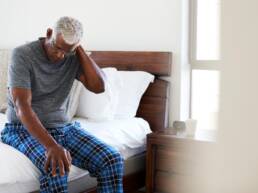
Symptoms
Most herniated discs occur in the lower back, although they can also occur in the neck. Signs and symptoms depend on where the disc is situated and whether the disk is pressing on a nerve. They usually affect one side of the body.
Arm or leg pain. If your herniated disc is in your lower back, you'll typically feel the most pain in your buttocks, thigh and calf. You might have pain in part of the foot, as well. If your herniated disc is in your neck, you'll typically feel the most pain in your shoulder and arm. This pain might shoot into your arm or leg when you cough, sneeze or move into certain positions. Pain is often described as sharp or burning.
Numbness or tingling. People who have a herniated disc often have radiating numbness or tingling in the body part served by the affected nerves.
Weakness. Muscles served by the affected nerves tend to weaken. This can cause you to stumble, or affect your ability to lift or hold items.
You can have a herniated disc without symptoms. You might not know you have it unless it shows up on a spinal image.
PRI Bone-on-bone
Bone-on-Bone
Are you suffering from intense bone-on-bone pain that is preventing you from moving freely, playing with your grandchildren or participating in activities you enjoy?
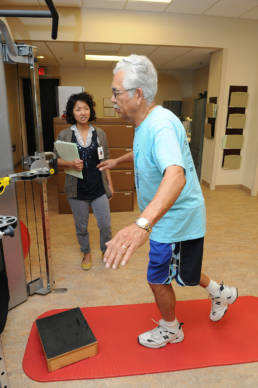
PREMIER TREATMENT FOR BONE-ON-BONE
Pain Relief Institute is the premier destination in Chicago and the Midwest for innovative and alternative treatments for Bone-on-Bone pain. We cater to active seniors and patients told they need joint replacement who are not interested in simply masking their discomfort with medications or temporary relief from cortisone injections or having surgery.
We specialize in non-surgical and minimally invasive treatment approaches. With years of experience researching performing cutting-edge techniques, few physicians have more to offer than our specialists.
Disclaimer: Our healthcare practitioners use products and perform therapies cleared for general use by the United States Food and Drug Administration, but specific indications for treatment have not be evaluated and reviewed by the FDA.
What is "Bone-on-Bone"?
The knee is a hinged joint with a hard “teflon”-like coating that protects the bone as it slides back and forth. This hard, slick coating is called hyaline cartilage (it is different from the meniscus, which is a leathery pad that acts as an extra layer of cushion for activities such as running and jumping). The hyaline cartilage acts as a slippery tissue that allows the bones to glide smoothly over each other and helps absorb the shock placed on the joints with movement.
When the cartilage wears away, that protection between the joints is lost, which is what we refer to as “bone on bone”. As the bones rub together, friction occurs, which interferes with the knee joint’s ability to move freely, wears down the surface of the bones, alters the bone’s shape, and causes bone spurs to form. Bone on bone arthritis can also cause tiny pieces of bone and cartilage to break away and float within the joint space, causing further damage and pain.

Understanding "Bone-on-Bone" Symptoms
Bone on bone knee pain is the direct result of severe degenerative changes to the knee joint from osteoarthritis. When the cartilage in your knee joint has worn away, and the joint space has narrowed enough to leave the bones exposed, they will rub against each other, causing extreme pain and stiffness. Osteoarthritis has no singular cause, but there are several risk factors that can increase your chances of developing it.
- Stiffness, often worse after rest or sitting
- Grating or crunching sensation and sound when moving the knee
- Decreased flexibility and range of motion
- Inability to bend the knee
- Bone spurs, which form on the edges of the bones as our body’s natural response to degenerative changes as it rebuilds more bone to make up for the loss.

PRI Arthritis
Traditional Treatments
Medication
Steroid injection
Surgery
Bracing
Physical Therapy

Regenerative Medicine Treatments
Bone Marrow Concentrate (BMC/Stem Cell Therapy)
PRP
Amnio-Derived Cellular Therapy
MLS Laser Therapy
Premier Treatment Destination For Osteoarthritis & Cartilage Lesions
Pain Relief Institute is the premier destination in Chicago and the Midwest for innovative and Advanced Regenerative Medicine treatment for Osteoarthritis and Soft Tissue degeneration. We cater to athletes, weekend warriors and active seniors who are not interested in simply masking their discomfort with medications, temporary relief from cortisone injections and are looking to avoid surgery.
We specialize in non-surgical and minimally invasive treatment approaches. With years of experience researching and performing cutting-edge techniques, few physicians have more to offer than the Specialists at Pain Relief Institute.
Disclaimer: Our healthcare practitioners use products and perform therapies cleared for general use by the United States Food and Drug Administration, but specific indications for treatment have not be evaluated and reviewed by the FDA.
Diagnosis
If our specialists suspect a cartilage problem is causing your symptoms, we will perform a full physical examination in order to obtain a diagnosis. We will begin by collecting detailed information about your symptoms, including their duration, severity and what activities seem to worsen them. From there, we will move the affected limb to test its mobility and evaluate the area for tenderness.
Frequently, we will order an X-Ray initially to see the arthritic changes that have taken place and from there may order an MRI to access cartilage damage. In most cases when diagnosed early conservative treatment such as Platelet-Rich Plasma or Amnio-Derived Cellular Therapy can be effective.
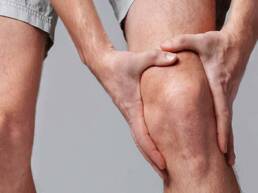
Symptoms
Because osteoarthritis and cartilage lesions both affect your joints, they produce very similar symptoms. The most common ones include:
- Pain
- Swelling
- Joint instability
- Decrease range of motion
- A locking or catching sensation
- Numbness
These symptoms may improve with rest, but they will always return when you resume your normal activities. And, because osteoarthritis is a degenerative disease, the damage and symptoms often continue to worsen over time.
What Causes Arthritis
The most common form of arthritis, osteoarthritis is a degenerative disease characterized by the gradual wearing down of your cartilage over time. Although it can affect any joint in the body, it’s most likely to impact the joints in your spine, hips, knees and hands.
A cartilage lesion is an injury that involves damage to the cartilage surrounding the knee joint. These lesions may be degenerative and caused by “wear and tear,” or they may be traumatic and caused by a sudden injury. When the lesions develop, they may not result in any symptoms initially. However, as the damage progresses, they can lead to a number of problems, including inflammation, decreased mobility, pain and a loss of joint function.
GENETIC FACTORS
REPETITIVE USE & EXTENSIVE WEAR AND TEAR
ADVANCING AGE
TRAUMA
